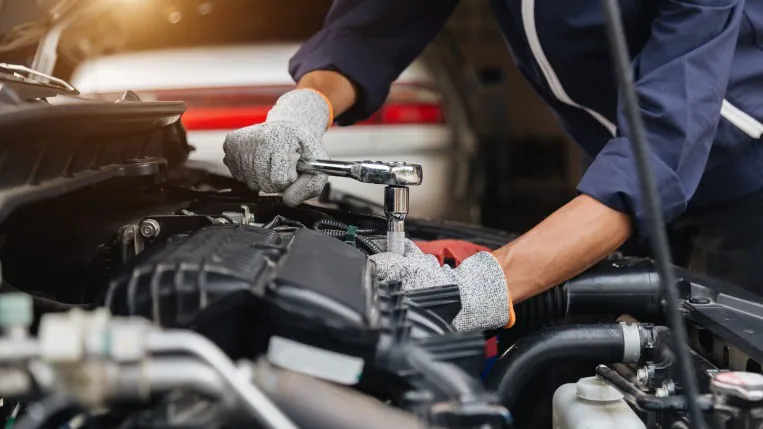Your car’s engine is its heart, so it must be regularly maintained to guarantee optimal performance. Here are some steps that you should take to care for your engine:
First and foremost, make sure to change the oil in your car at regular intervals. Oil keeps all lubricated moving parts of your engine well lubricated so they don’t wear down prematurely.
Check the Oil
The oil in your car’s engine is vital for lubricating all the moving parts and keeping them running smoothly. It also flushes out metal flakes and other contaminants that can build up over time.
Check your oil level using a dipstick located beneath your car hood. It should usually have two lines or cross-hatched area that indicates when your oil is at the proper level.
If your dipstick reads below the “low” or “add” line, more oil may be necessary. On the other hand, if it comes out above or beyond the “full” or “check” line, your oil level remains unchanged and no further additions are necessary.
Before driving your car or taking it on a long road trip, be sure to check its oil. Doing so can prevent the engine from overheating and burning out.
Change the Air Filter
Your car’s engine needs a certain amount of clean air to burn fuel and generate power, but over time dirt, dust, and other materials can obstruct that flow.
Altering the air filter in your engine is a relatively straightforward and effortless task that doesn’t necessitate special tools or automotive expertise. Additionally, it is an essential step for maintaining your car.
A dirty engine air filter can lead to a variety of issues, from decreased power and gas mileage to an illuminated Check Engine light. If you observe any of these symptoms, it’s time for you to replace the filter immediately.
Typically, your air filter is located in a rectangular housing near the front of your vehicle’s engine. To find exactly where and how to access it, consult your owner’s manual for specifics.
Change the Spark Plugs and Wires
Your car’s ignition system relies on spark plugs. These tiny, high-voltage plugs fire a burst of electricity across an electrode gap to ignite the air-fuel mixture in your cylinders.
Over time, these parts are susceptible to wear and tear, degrading their electrical resistance. If the resistance becomes too high, it degrades spark quality, leading to misfires, poor fuel economy and hydrocarbon emissions.
According to industry guidelines, you should replace your spark plugs every 20,000 to 40,000 miles. However, depending on the model or type of plugs, your vehicle’s manufacturer may specify a longer replacement interval.
Change the Belts
Your car’s engine relies on rubber belts to keep everything running efficiently while it is running. Unfortunately, when these belts break or slip, the components they control can stop working completely and lead to a serious issue.
Regularly checking and replacing these belts is essential for the health of your vehicle’s engine, as they play an integral role in powering it. Checking and replacing them can help protect both its engine and other parts by preventing damage.
The serpentine belt is the most common type of belt used today and essential to running many important systems in your car, from the alternator to power steering pump. Serpentine belts should be inspected and replaced at around 60,000 miles or sooner.
To replace the belt, first remove it from its pulleys with a wrench or ratchet. Then, install a new one using the same routing diagram as before.

